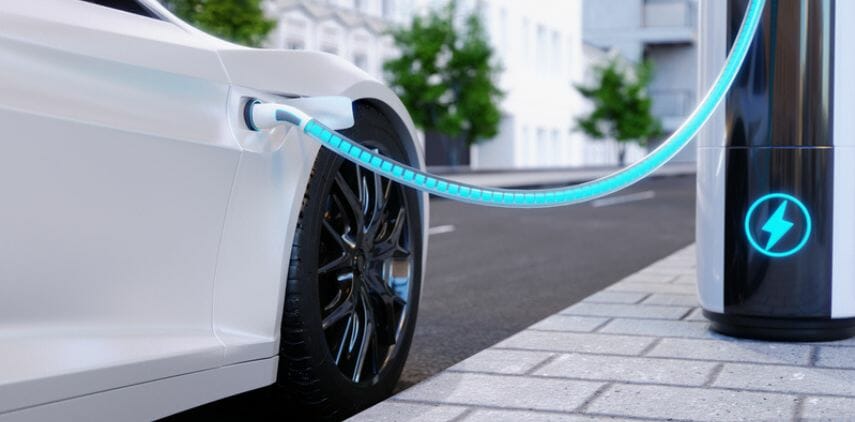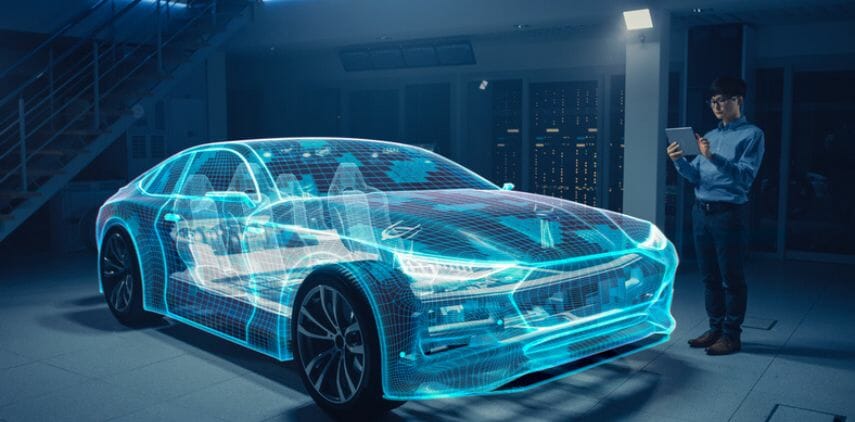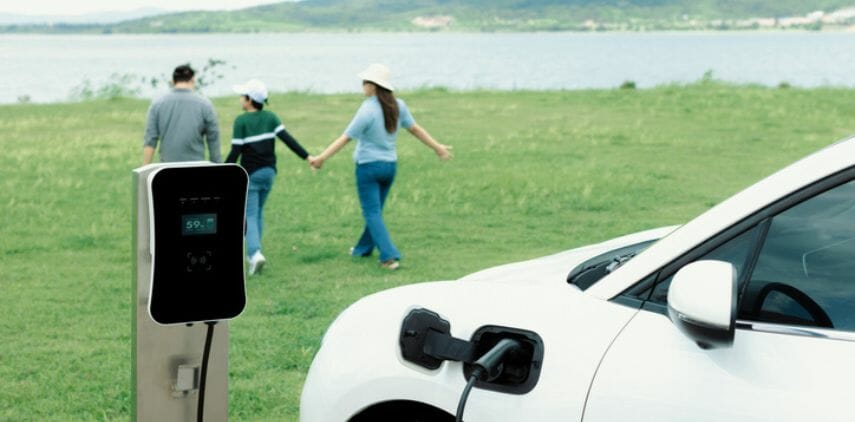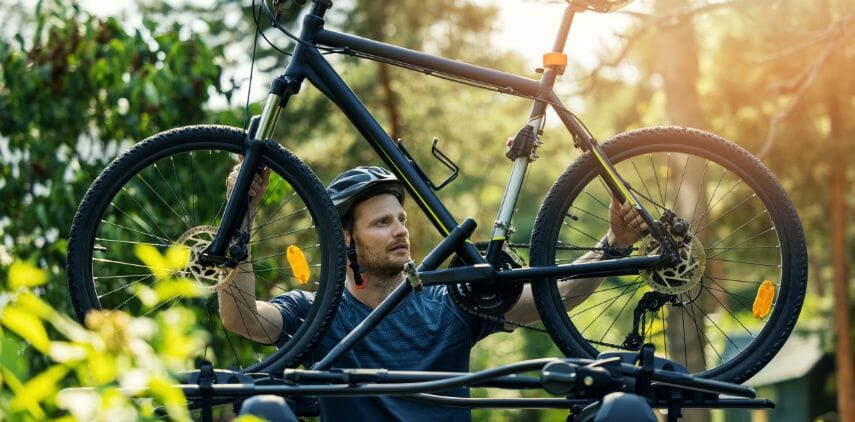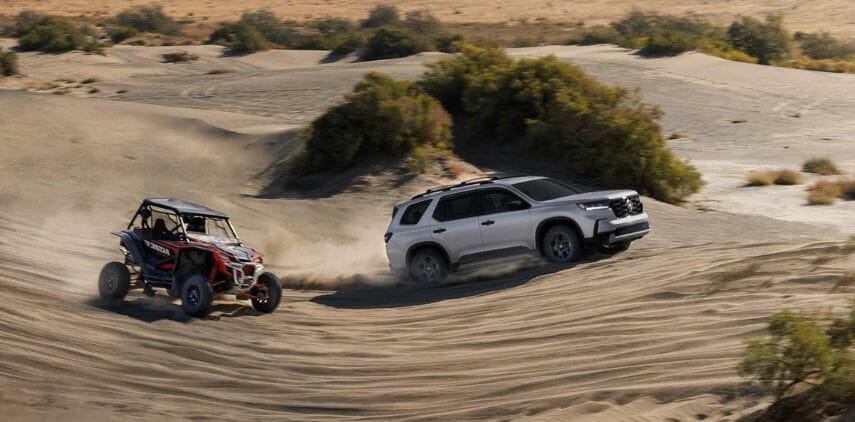Overview
Ah, winter—the season of snow-covered landscapes, cozy fireplaces, and the exhilaration of tackling icy roads. As the temperatures drop and the fluffy white stuff accumulates, it’s crucial to have a reliable vehicle that can confidently navigate these challenging conditions.
Enter the SUV, the mighty machine designed to tame the winter wilderness.
In this article, we’ll explore the best SUVs for the snow, shed light on the eternal 4WD vs. AWD debate, delve into the wonders of Subarus, unravel the mysteries of ground clearance, and much more. Buckle up as we embark on an icy adventure to find the perfect winter warrior!
Table of Contents
Are SUVs Good in Snow?
When it comes to tackling snow-covered terrain, SUVs are indeed a force to be reckoned with. Their higher ground clearance, sturdy build, and robust drivetrain systems give them an edge over smaller vehicles.
The added weight of an SUV also provides better traction and stability, allowing for improved handling on slippery surfaces. However, not all SUVs are created equal in the snow, and some models perform better than others due to various factors like drivetrain type and specific snow-oriented features.
Factors to Consider When Choosing an SUV for Winter Wonderlands
When searching for an ideal SUV for tackling winter weather, there are several factors to consider, such as drivetrain type (4WD vs. AWD), ground clearance, and special snow-ready features. Let’s take a closer look at each of these elements.
Drivetrain Type
The two main types of drivetrains in SUVs are 4WD and AWD. The difference between the two is that 4WD allows for manual switching between 2WD and 4WD, while AWD provides full-time power to all four wheels—a feature that can be advantageous in snowy conditions.
Ground Clearance
Ground clearance refers to the amount of space between the bottom of your vehicle and the ground. SUVs with higher ground clearance tend to be more capable in snow since they can handle larger obstacles like deep snowdrifts without becoming stuck.
Snow-Ready Features
Finally, some models come with specific features designed for improved performance in winter weather. These options include things like heated wiper blades that melt away the ice and snow, reinforced skid plates to protect against hidden rocks and roots, and traction control systems that adjust the grip of each wheel for better control in slippery conditions.
Ultimately, when it comes to selecting a winter-ready SUV, you need to look beyond just the specs and consider how all these factors play into overall performance. So, don’t forget to do your research before hitting the road!
Is 4WD or AWD Better in Snow?
Ah, the classic battle between 4WD (four-wheel drive) and AWD (all-wheel drive). Both systems have their merits, but AWD tends to take the crown when it comes to snowy conditions. AWD systems automatically distribute power to all four wheels, providing enhanced traction and control.
On the other hand, 4WD systems often require manual engagement and are better suited for off-road adventures rather than snowy roads. So, if you’re seeking optimal performance in the snow, AWD is the way to go.
The Beauty of All-Wheel Drive (AWD)
AWD systems continuously monitor the traction of each wheel, adjusting power distribution accordingly. This dynamic control ensures that power is directed to the wheels with the most grip, maximizing traction and minimizing slippage.
AWD is particularly useful when navigating corners or inclines, as it aids in maintaining stability and preventing fishtailing. So, if you want to glide through winter wonderlands with grace and confidence, an AWD-equipped SUV is your ideal companion.
What Cars Should Not Drive in Snow?
While SUVs excel in snowy conditions, there are some cars that should avoid venturing into winter wonderlands. Rear-wheel drive (RWD) vehicles, with their weight distribution favoring the rear wheels, can struggle in the snow.
Sports cars and low-profile vehicles also face difficulties due to their limited ground clearance and performance-oriented tires. When it comes to conquering the snow, it’s best to leave these cars in the garage and opt for a more snow-friendly vehicle like an SUV.
Why Are Subarus So Good in Snow?

Ah, Subarus—the snow champs of the automotive world. What makes these Japanese beauties so exceptional in wintry conditions? The secret lies in their renowned symmetrical all-wheel drive (AWD) system.
Unlike many AWD systems that are retrofitted to existing drivetrains, Subaru’s symmetrical AWD is designed from the ground up. Its balanced layout, combined with a low center of gravity, enables superb stability, traction, and handling. Subaru’s commitment to safety and winter performance has made them a favorite among snow enthusiasts.
Does Ground Clearance Matter for Snow?
Absolutely! Ground clearance plays a vital role in determining a vehicle’s snow prowess. The higher the ground clearance, the better the SUV can navigate through deep snow without getting stuck.
A generous ground clearance also helps prevent snow from accumulating under the vehicle, reducing the risk of impeding the wheels’ rotation. So, when shopping for your snow-slaying SUV, keep an eye out for ample ground clearance to ensure you can conquer even the most treacherous drifts.
Are AWD Cars or SUVs Better for Snow?
While both AWD cars and SUVs offer enhanced traction and control in the snow, SUVs often have the upper hand. SUVs boast larger frames, higher ground clearance, and a more substantial weight distribution, which can provide added stability and improved performance in snow-covered conditions.
Additionally, the larger wheelbase of an SUV contributes to better weight distribution and traction, making it a compelling choice for snowy adventures. So, if you crave the ultimate snow companion, an AWD-equipped SUV is hard to beat.
Which Is More Important, AWD or Snow Tires?
Ah, the age-old question: AWD or snow tires? While AWD provides enhanced traction and control, it’s important not to underestimate the significance of snow tires. These specialized tires are designed with deeper treads, unique rubber compounds, and sipes to optimize grip on snowy and icy surfaces.
Even the most advanced AWD system can’t compensate for the lack of traction provided by regular tires. Combining AWD with high-quality snow tires creates an unstoppable duo that will have you defying winter’s icy grip.
What Is Better in an SUV, AWD, or FWD?
While AWD is often the preferred choice for SUVs, front-wheel drive (FWD) can still hold its own in snowy conditions. FWD offers better traction and stability than rear-wheel drive (RWD) vehicles, making it a more viable option for tackling snow-covered roads.
However, it’s important to note that AWD provides a significant advantage when it comes to snowy and slippery terrains. So, if you want to maximize your snow-driving potential, opt for an SUV with AWD for the ultimate winter experience.
Is a Bigger SUV Better in Snow?
Size isn’t everything when it comes to conquering the snow. While larger SUVs may have more weight and higher ground clearance, their increased size can also make them more challenging to maneuver in tight spaces.
Additionally, the weight of a larger SUV may cause it to sink deeper into deep snow, potentially compromising its ability to maintain traction. Ultimately, the best SUV for the snow strikes a balance between size, weight, ground clearance, and maneuverability, ensuring you can easily navigate both the wilderness and the city streets.
What Is the Best Hybrid Car in the Snow?
Hybrid cars have come a long way in recent years, offering improved fuel efficiency and eco-conscious driving. When it comes to snow, hybrid SUVs like the Toyota RAV4 Hybrid and the Ford Escape Hybrid are excellent options.
These vehicles combine AWD systems’ benefits with hybrid technology’s efficiency and eco-friendliness.
With their electric motors assisting the gas engines, hybrid SUVs deliver reliable performance and improved fuel economy, making them a smart choice for eco-conscious snow warriors.
Can Driving Through Snow Damage Your Car?
While driving through snow can be challenging, it generally won’t cause direct damage to your car. However, it’s crucial to keep your vehicle well-maintained and take preventive measures to ensure its longevity. Salt and other road de-icing agents can accelerate corrosion, so regular car washes during the winter season are essential.
Additionally, checking your vehicle’s tires, brakes, and fluid levels before embarking on snowy adventures will help minimize the risk of mechanical issues. Taking proper care of your car lets you enjoy the winter wonderland without any worries.
Conclusion

When it comes to tackling snow-covered roads, SUVs equipped with AWD reign supreme. Their robust build, high ground clearance, and advanced drivetrain systems provide the necessary tools to conquer winter wonderlands with confidence.
While AWD is undoubtedly a game-changer, pairing it with high-quality snow tires takes your snow-driving experience to new heights. Whether you opt for a Subaru with its legendary symmetrical AWD or choose a hybrid SUV for a greener snow adventure, finding the perfect snow companion requires careful consideration of factors like ground clearance, weight distribution, and maneuverability.
So, embrace the snowy season, choose your winter warrior wisely, and embark on exhilarating journeys through the frosty landscapes with a trusty SUV by your side. Happy snow conquering!


